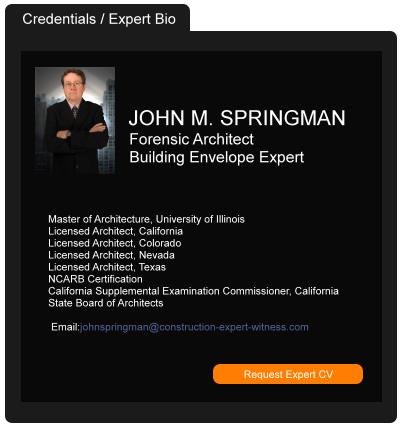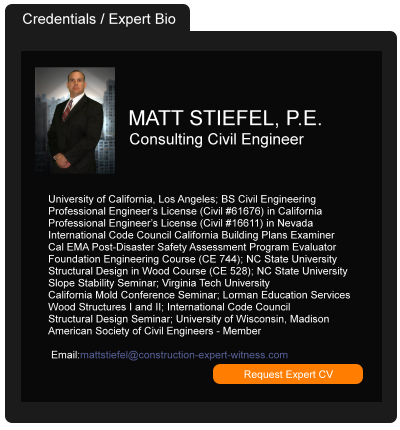Fire Tests Inspire More Robust Timber Product Standard
March 22, 2018 —
Nadine M. Post– ENRBased on recent fire test results, mass timber groups have adjusted product certification standards to require the use of cross-laminated timber with structural adhesives tested to demonstrate better fire performance.
Read the court decisionRead the full story...Reprinted courtesy of
Nadine M. Post, Engineering News-RecordMs. Post may be contacted at
postn@enr.com
Certified Question Asks Washington Supreme Court Whether Insurer is Bound by Contradictory Certificate of Insurance
January 21, 2019 —
Tred R. Eyerly - Insurance Law HawaiiThe Ninth Circuit certified a question to the Washington Supreme Court as follows:
Under Washington law, is an insurer bound by representations made by its authorized agent in a certificate of insurance with respect to a party's status as an additional insured under a policy issued by the insurer, when the certificate includes language disclaiming its authority and ability to expand coverage?
T-Mobile USA Inc. v. Selective Ins. Co lf Am., 2018 U.S. App. LEXIS 31863 (9th Cir. Nov. 9, 2018).
In 2010, T-Mobile entered into a Field Services Agreement (FSA) with Innovative Engineering, Inc. under which Innovative would provide services in connection with the construction of rooftop cellular antennae towers in New York City. The FSA required Innovative to maintain general liability insurance naming T-Mobile as an additional insured, and required that Innovative provide T-Mobile with certificates of insurance documenting the coverage. Innovative obtained coverage from Selective Insurance Company of America.
Read the court decisionRead the full story...Reprinted courtesy of
Tred R. Eyerly, Damon Key Leong Kupchak HastertMr. Eyerly may be contacted at
te@hawaiilawyer.com
Labor Shortages In Construction
December 04, 2023 —
Jason Feld & Chris Bates - Kahana FeldSimilar to other industries, the ongoing labor shortage crisis in the United States is detrimentally impacting construction activities in both the residential and commercial sector. According to the Bureau of Labor Statistics, the turnover rate for the construction industry since 2021 has risen to 56%. And while the national unemployment rate ranges between 0.4% to 7.5%, the unemployment rate for construction is roughly four times the national average (See, Associated Builders and Contractors, Markenstein Advisors Report dated July 28, 2023). 73% of workers preferred to stay in a remote work environment, and another 40% of the global workforce has elected to voluntarily remove themselves from the workplace. (See, 2021 Microsoft Work Index). In particular with the construction industry, employment rates have returned to pre-pandemic levels hovering around 12% unemployment in 2020 to 6% in 2022. (See, Joint Center for Housing Studies at Harvard University, Carlos Martin).
So where did all the workers go? During the height of the 2020 Covid-19 Pandemic and for the next few years, the county experienced what most people are calling “The Great Resignation”. May people took jobs with better pay and better alignment with their values. Approximately 40% stated a new business. Many elected to become stay-at-home parents forgoing a paycheck to raise their families while the other spouse works, especially due to the rising costs of childcare. About 1 in every 4 baby-boomers retired. Others took part-time employment, entered military service or left the workforce due to disability or injury. (See, Bloomberg Businessweek).
Reprinted courtesy of
Jason Feld, Kahana Feld and
Chris Bates, Kahana Feld
Mr. Feld may be contacted at jfeld@kahanafeld.com
Mr. Bates may be contacted at cbates@kahanafeld.com
Read the court decisionRead the full story...Reprinted courtesy of
Substantial Completion Explained: What Contractors & Owners Should Know
January 17, 2022 —
Travis Colburn - Ahlers Cressman & SleightA project’s Substantial Completion date is a critical construction milestone for contractors and owners. Depending on the contract, the date of Substantial Completion has project-specific contractual and statutory consequences.
Substantial Completion is an “event” – there is no universal definition of the term. It is generally understood to be (1) a point in time (2) when work performed by the contractor is sufficiently complete (3) where it can be used or occupied for the owner’s intended purpose. The date of Substantial Completion is generally established at the time of contract formation (either as a negotiated or a contract set date), and that date may be adjusted over the course of a project to account for excusable delays.
As a construction professional, your attorney should review and tailor any written agreement to your project-specific needs and risk tolerances prior to execution. Savvy construction professionals often start with standard form agreements promulgated by the American Institute of Architects (“AIA”), the Design-Build Institute of America (“DBIA”), or the Engineers Joint Contract Document Committee (“EJCDC”) as the basis for their construction contracts. The AIA, DBIA, and EJCDC standard forms each contains contract provisions relating to when and what happens once Substantial Completion has occurred, subject to any agreed-to, project-specific deviations.
Read the court decisionRead the full story...Reprinted courtesy of
Travis Colburn, Ahlers Cressman & SleightMr. Colburn may be contacted at
travis.colburn@acslawyers.com
Insurance Law Client Alert: California Appeals Court Refuses to Apply Professional Services Exclusion to Products-Completed Operations Loss
March 19, 2014 —
Valerie A. Moore and Chris Kendrick - Haight Brown & Bonesteel LLPIn North Counties Engineering v. State Farm (No. A133713, filed 3/13/14), State Farm insured an engineering company under CGL insurance that had a professional services exclusion and included products-completed operations (PCO) coverage. The owner of the engineering company, NCE, contracted with a winery to construct a dam and associated works. Also on the project was the owner's son, who had his own construction company, NCD. There were multiple contracts, both oral and written, variously naming one company or the other. The evidence later showed that the father performed hands-on work for the project.
After completion, the winery was sued over sediment and erosion caused by the dam. State Farm denied coverage on the ground that the professional services exclusion applied, as well as a mistaken belief that the policy had no PCO coverage. State Farm then changed its position and agreed to defend, but only going forward. The insured sued State Farm over past defense fees, alleging breach of contract and bad faith. The case went to trial and after testimony detailing State Farm's claim handling, the trial judge granted a nonsuit, finding that the professional services exclusion barred all coverage:
"[I]f you look at the pleadings, the legal pleadings and the contracts, the NCE role is, as the engineering company, the support company, and that company was overseeing the [sic] NCD to make sure that whatever they did was done right.... NCE is the expert on the job, the professional providing professional services, design and construction, and also overseeing the work of NCD, the son’s business, which is doing more of the physical activity.... That takes professional expertise and I think all of what Mr. Akerstrom did was professional.... It was this professional work, and not 'something incidental to their professional involvement' that gave rise to the underlying actions. In this situation, it’s not a malpractice or E and O policy. It’s a business policy, which has good benefits, but is subject to the professional services exclusion."
Reprinted courtesy of
Valerie A. Moore and
Chris Kendrick of Haight Brown & Bonesteel LLP
Ms. Moore may be contacted at vmoore@hbblaw.com; Mr. Kendrick may be contacted at ckendrick@hbblaw.com
Read the court decisionRead the full story...Reprinted courtesy of
Catching Killer Clauses in Contract Negotiations
January 29, 2024 —
James T. Dixon - Construction ExecutiveRisk-management personnel who are in the business of reviewing and negotiating construction contracts have some simple tools at their disposal to make sure their edits are addressing all of the killer risk-shifting clauses in those contracts. One of those is the index to that document. But not all authors of construction contract documents are kind enough to include an exhaustive index in their form agreements.
One of the most popular sets of general conditions, the A201 General Conditions published by the American Institute of Architects, includes one that is fairly comprehensive. It identifies the six terms that include a reference to indemnification, for example. On the other end of the spectrum are the innumerable custom forms created by public and private project owners, and these rarely have an index.
Even more powerful than an index is the search or find functions that are available in word processing applications and now in Adobe, the publisher of documents in portable document format, more commonly known as PDF. But with PDF documents, one must be careful to make sure the document under review is in fact searchable. Because every letter counts, it is important to have full confidence in the integrity of the search.
Reprinted courtesy of
James T. Dixon, Construction Executive, a publication of Associated Builders and Contractors. All rights reserved.
Read the court decisionRead the full story...Reprinted courtesy of
Sinking S.F. Tower Prompts More Lawsuits
January 19, 2017 —
JT Long - Engineering News-RecordHomeowners on Jan. 6 added another lawsuit to the list pending against Millennium Partners, developer of the 645-ft-tall Millennium Tower, located in San Francisco’s South-of-Market district. The suit alleges that, as early as 2009, the developers knew the $350-million condo building was sinking faster than expected.
Read the court decisionRead the full story...Reprinted courtesy of
JT Long, ENRENR may be contacted at
ENR.com@bnpmedia.com
Candlebrook Adds Dormitories With $230 Million Purchase
November 05, 2014 —
John Gittelsohn - BloombergCandlebrook Properties LLC, a closely held company with about 5,000 apartments in the eastern U.S., is diversifying into student housing with the $230 million acquisition of five off-campus properties.
Candlebrook joined with Lubert-Adler Partners on the purchase of buildings with about 3,400 beds near colleges in Georgia, Indiana, Kentucky and Virginia. Formerly known as Vantage Properties LLC, Candlebrook began as an investor in New York City apartments in 2005 and later expanded to New Jersey and the Philadelphia area.
“Student housing is a natural extension of our pre-existing business line,” Neil Rubler, president of New York-based Candlebrook, said in a telephone interview. It’s “a business that’s far less crowded than multifamily, which has been our core business.”
Capitalization rates on apartments, a measure of profitability, have dropped as investors drive up property prices. Student housing has become an attractive alternative, luring homebuilder Toll Brothers Inc. (TOL) and private-equity firm Colony Capital LLC to an industry already home to real estate investment trusts American Campus Communities Inc. (ACC), Campus Crest Communities Inc. (CCG) and Educational Realty Trust Inc. (EDR)
Read the court decisionRead the full story...Reprinted courtesy of
John Gittelsohn, BloombergMr. Gittelsohn may be contacted at
johngitt@bloomberg.net


































































